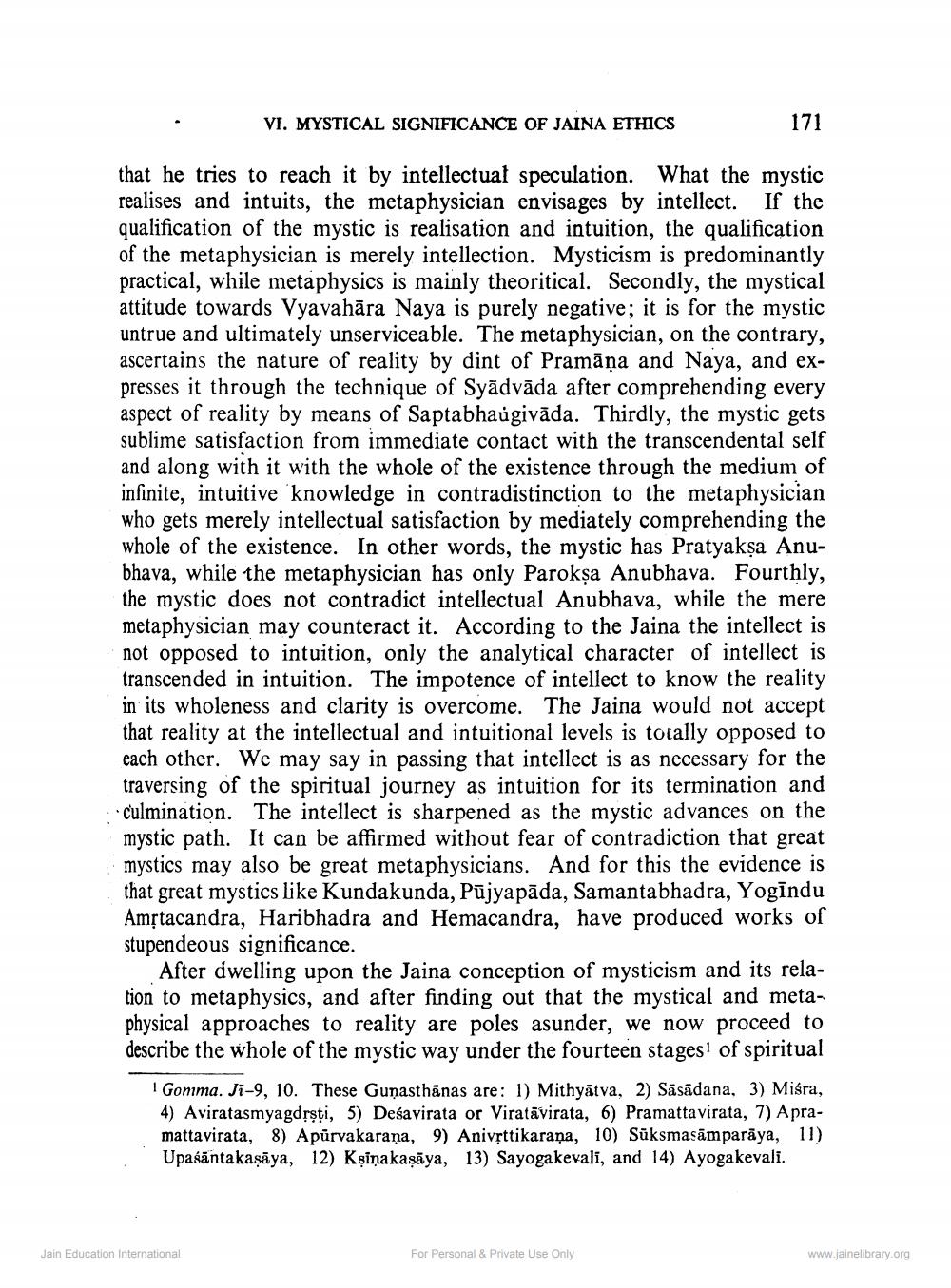________________
VI. MYSTICAL SIGNIFICANCE OF JAINA ETHICS
171
that he tries to reach it by intellectuat speculation. What the mystic realises and intuits, the metaphysician envisages by intellect. If the qualification of the mystic is realisation and intuition, the qualification of the metaphysician is merely intellection. Mysticism is predominantly practical, while metaphysics is mainly theoritical. Secondly, the mystical attitude towards Vyavahāra Naya is purely negative; it is for the mystic untrue and ultimately unserviceable. The metaphysician, on the contrary, ascertains the nature of reality by dint of Pramāṇa and Naya, and expresses it through the technique of Syādvāda after comprehending every aspect of reality by means of Saptabhaugivāda. Thirdly, the mystic gets sublime satisfaction from immediate contact with the transcendental self and along with it with the whole of the existence through the medium of infinite, intuitive knowledge in contradistinction to the metaphysician who gets merely intellectual satisfaction by mediately comprehending the whole of the existence. In other words, the mystic has Pratyakşa Anubhava, while the metaphysician has only Paroksa Anubhava. Fourthly, the mystic does not contradict intellectual Anubhava, while the mere metaphysician may counteract it. According to the Jaina the intellect is not opposed to intuition, only the analytical character of intellect is transcended in intuition. The impotence of intellect to know the reality in its wholeness and clarity is overcome. The Jaina would not accept that reality at the intellectual and intuitional levels is totally opposed to each other. We may say in passing that intellect is as necessary for the traversing of the spiritual journey as intuition for its termination and culmination. The intellect is sharpened as the mystic advances on the mystic path. It can be affirmed without fear of contradiction that great mystics may also be great metaphysicians. And for this the evidence is that great mystics like Kundakunda, Pūjyapāda, Samantabhadra, Yogīndu Amptacandra, Haribhadra and Hemacandra, have produced works of stupendeous significance.
After dwelling upon the Jaina conception of mysticism and its relation to metaphysics, and after finding out that the mystical and metaphysical approaches to reality are poles asunder, we now proceed to describe the whole of the mystic way under the fourteen stages of spiritual
Gomma. Ji-9, 10. These Gunasthānas are: 1) Mithyātva, 2) Sāsādana, 3) Miśra, 4) Aviratasmyagdrsti, 5) Deśavirata or Viratāvirata, 6) Pramatta virata, 7) Apramattavirata, 8) Apūrvakarana, 9) Anivșttikaraņa, 10) Sūksmasāmparāya, 11) Upaśāntakaṣāya, 12) Kșiņakaṣāya, 13) Sayogakevali, and 14) Ayogakevali.
Jain Education International
For Personal & Private Use Only
www.jainelibrary.org




